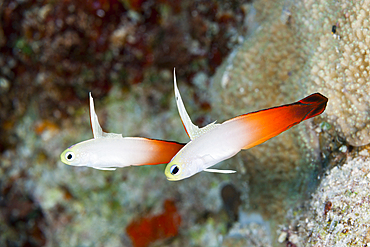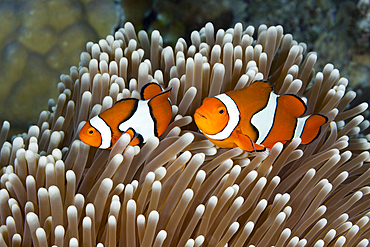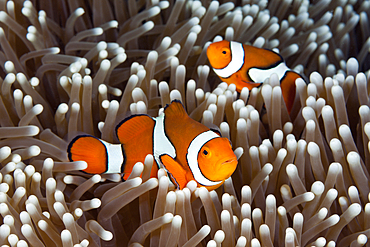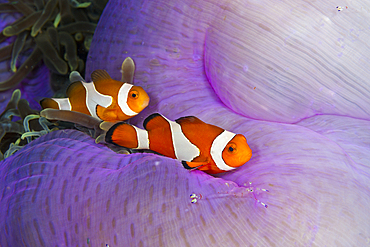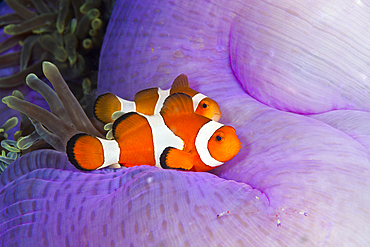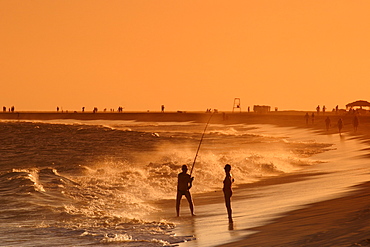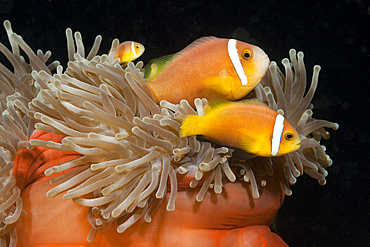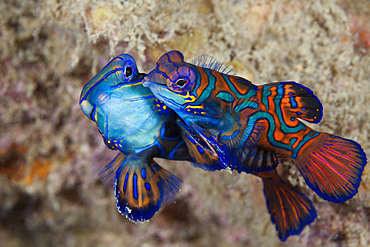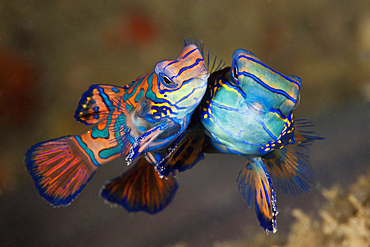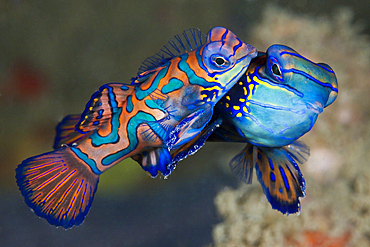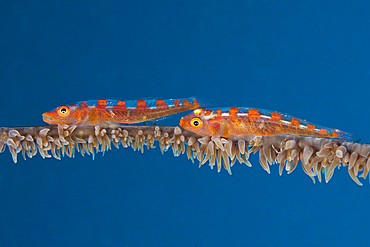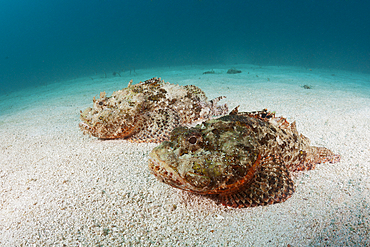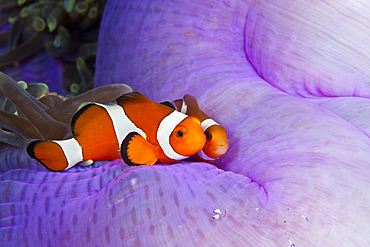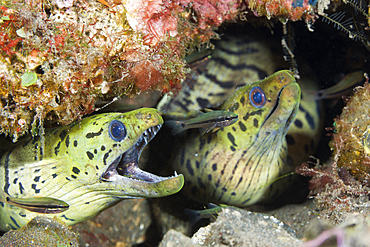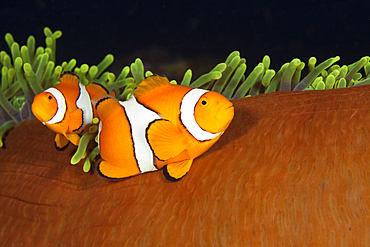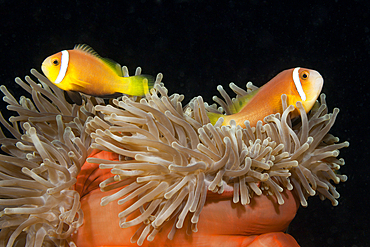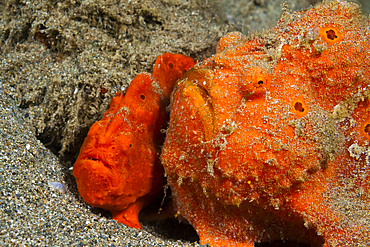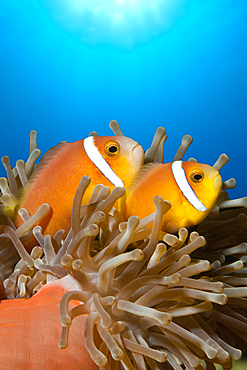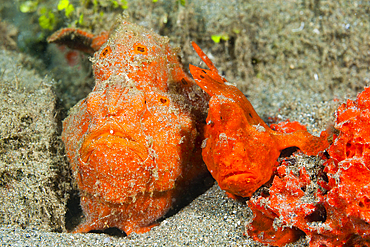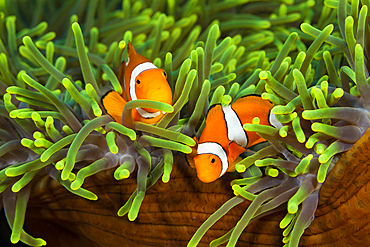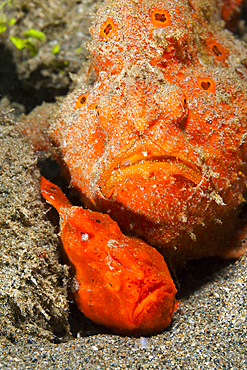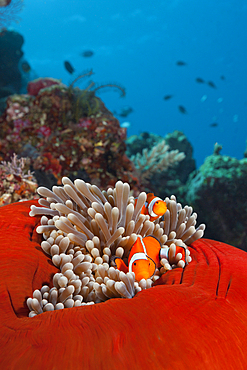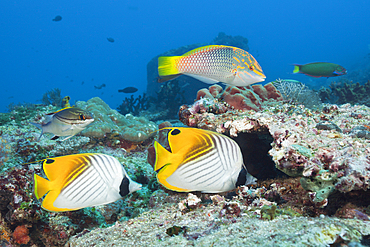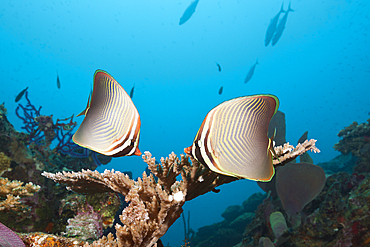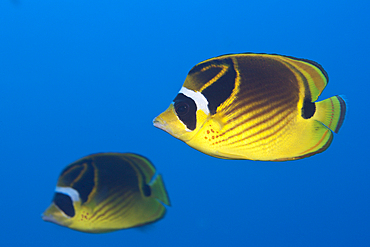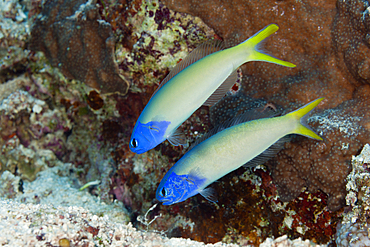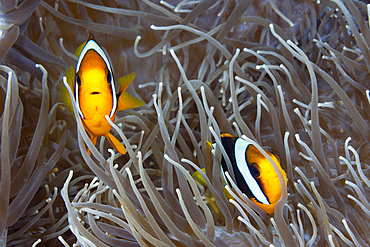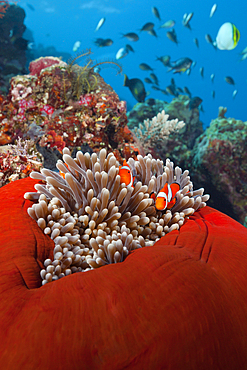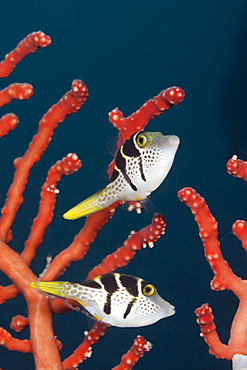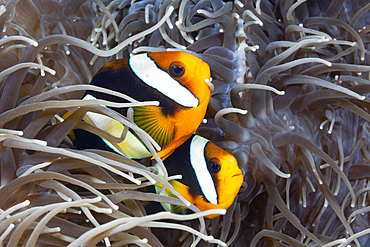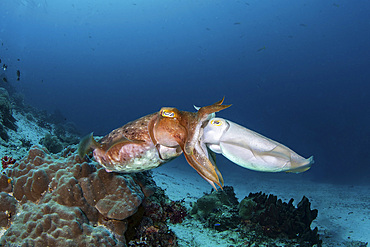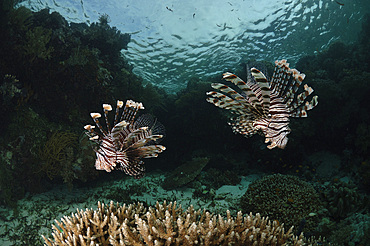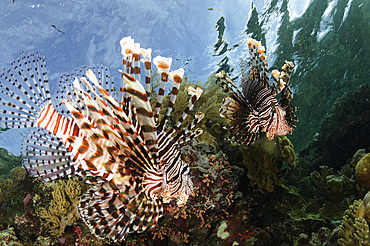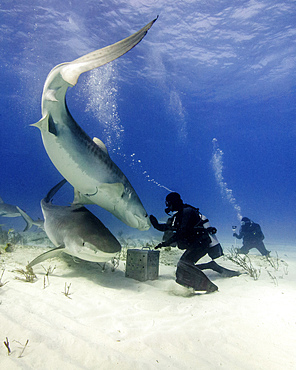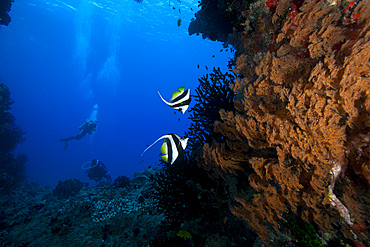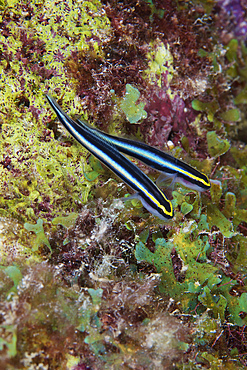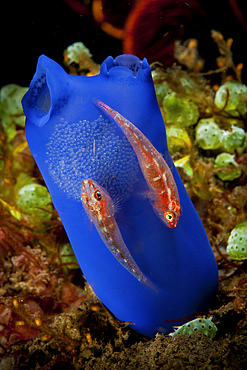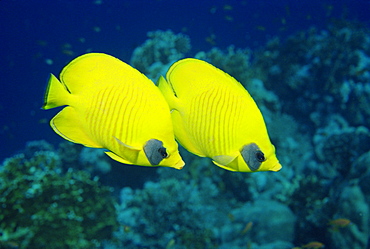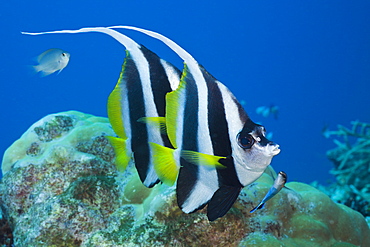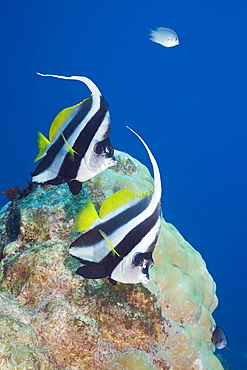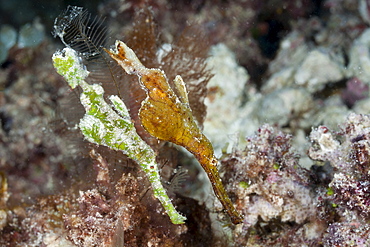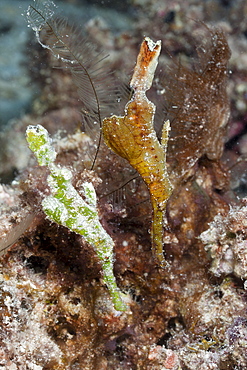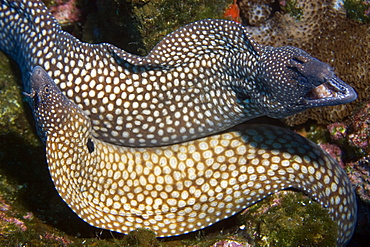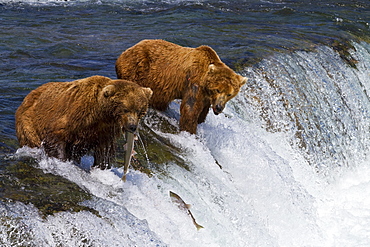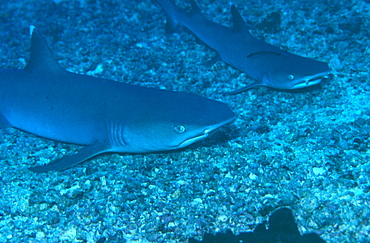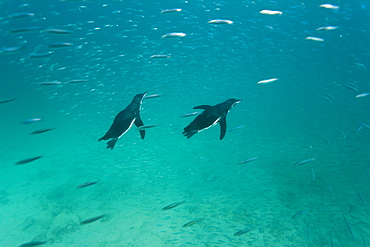Results
63 results found

Ornate ghost pipefish (harlequin ghost pipefish) (Solenostomus paradoxus), usually found in pairs at sea fans, or crinoids, Celebes Sea, Sabah, Malaysia, Southeast Asia, Asia

Pair of Brown Pelicans (Pelecanus occidentalis) dive for fish at the Nosara River mouth, Nosara, Guanacaste Province, Costa Rica, Central America
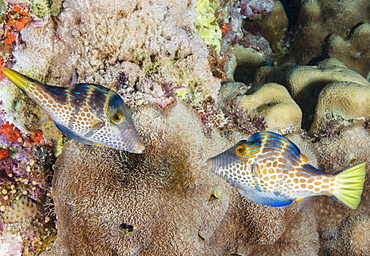
Mating display by pair of Wire-net filefish (Cantherhines paradalis), Queensland, Australia, Pacific
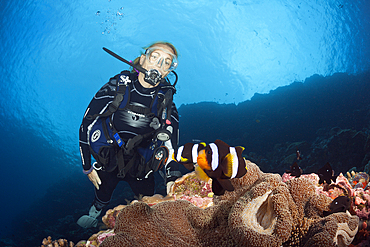
Scuba Diver watching Pair of Clarks Anemonenfish, Amphiprion clarkii, Russell Islands, Solomon Islands
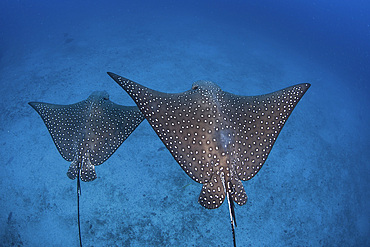
A pair of spotted eagle rays (Aetobatus narinari) swim over the deep, sandy seafloor near Cocos Island, Costa Rica. This remote, Pacific island is famous for its healthy fish and shark populations.
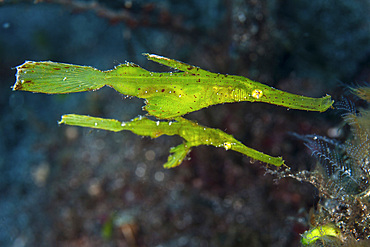
A pair of robust ghost pipefish (Solenostomus cyanopterus) hover above the seafloor in Komodo National Park, Indonesia. This tropical area in the western Pacific harbors an extraordinary array of marine organisms.
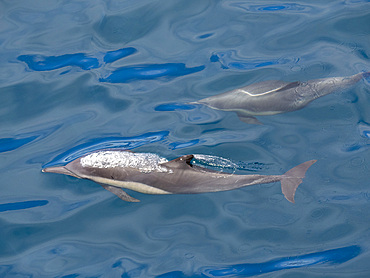
A pair of long-beaked common dolphins (Delphinus capensis), surfacing off Gorda Banks, Baja California Sur, Mexico, North America
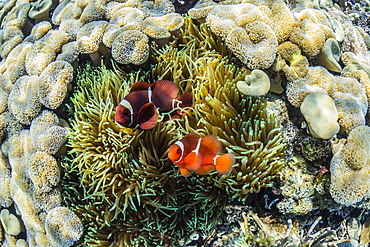
A pair of spinecheek anemonefish (Premnas biaculeatus), Sebayur Island, Komodo Island National Park, Indonesia, Southeast Asia, Asia
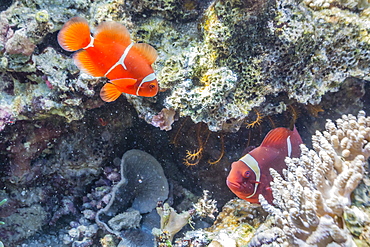
A pair of spinecheek anemonefish (Premnas biaculeatus), Sebayur Island, Komodo Island National Park, Indonesia, Southeast Asia, Asia
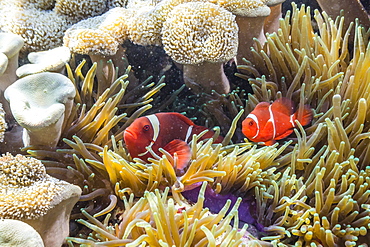
A pair of spinecheek anemonefish (Premnas biaculeatus), Sebayur Island, Komodo Island National Park, Indonesia, Southeast Asia, Asia
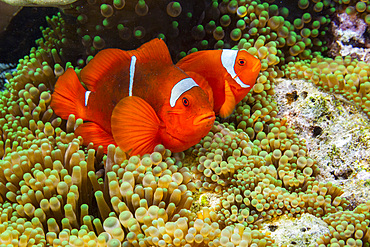
A pair of spine-cheek clownfish (Amphiprion biaculeatus), Pulau Gam night snorkel off Wohof Island, Raja Ampat, Indonesia, Southeast Asia
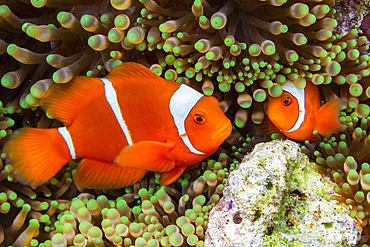
A pair of spine-cheek clownfish (Amphiprion biaculeatus), tucked into an anemone off Wohof Island, Raja Ampat, Indonesia, Southeast Asia
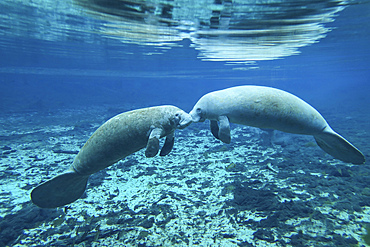
A pair of manatees appear to be greeting each other as they meet in the clear freshwater of the Fanning Spring inlet to the Suwannee River in Fanning Springs, Florida.
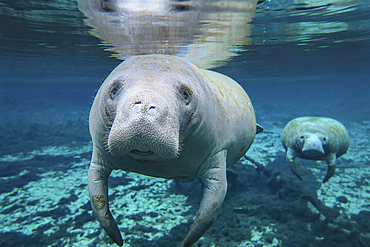
A pair of manatees swimming in formation with the lead manatee in the crystal clear freshwater of the Fanning Springs inlet to the Suwannee River, Florida.

A Sheepshead looks on as a pair of Blue Angelfish appear to be confused on which direction to go but each are feeding on different parts of coral and algae covered jetty rocks at St. Andrew Bay channel wall in Panama City Beach, Florida.
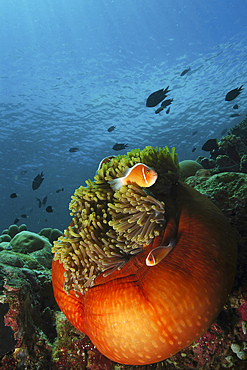
Pair of pink skunk clownfish (Amphiprion perideraion) nestled in a round bright orange anemone, Manado, North Sulawesi, Indonesia.

Pair of Caribbean reef sharks (Carcharhinus perezi) swimming along the reef, Jardines De La Reina, Cuba.

A pair of oceanic blacktip sharks with remora in tow pass each other by in a cloud of silvery fish, Aliwal Shoal, Umkomaas, KwaZulu-Natal, South Africa.
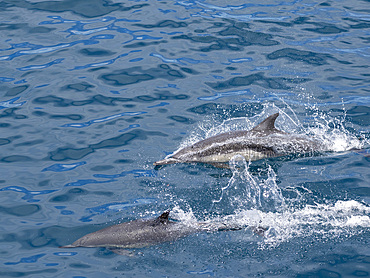
A pair of long-beaked common dolphins (Delphinus capensis), surfacing off Gorda Banks, Baja California Sur, Mexico, North America
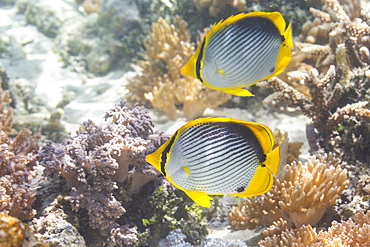
A pair of adult blackback butterflyfish (Chaetodon melannotus), off Bangka Island, near Manado, Sulawesi, Indonesia, Southeast Asia, Asia
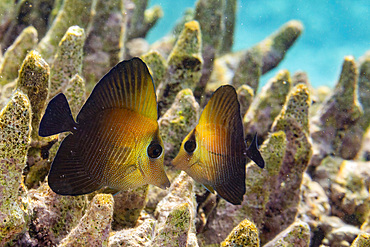
A pair of juvenile brown tangs (Zebrasoma scopas), on the reef off Kawe Island, Raja Ampat, Indonesia, Southeast Asia, Asia
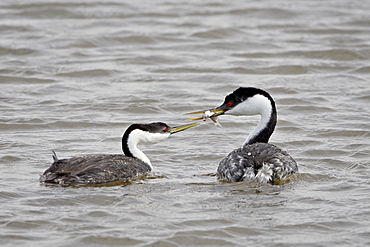
Western grebe (Aechmophorus occidentalis) courtship, Bear River Migratory Bird Refuge, Utah, United States of America
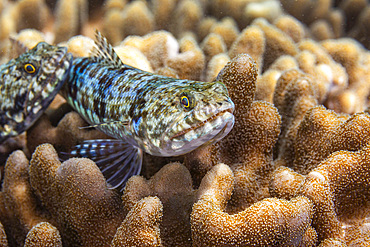
A pair of adult variegated lizardfish (Synodus variegatus), off Bangka Island, near Manado, Sulawesi, Indonesia, Southeast Asia, Asia
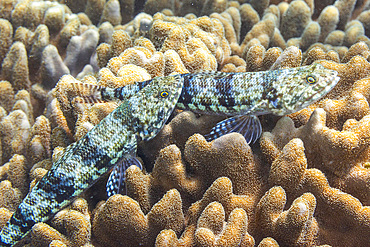
A pair of adult variegated lizardfish (Synodus variegatus), off Bangka Island, near Manado, Sulawesi, Indonesia, Southeast Asia, Asia
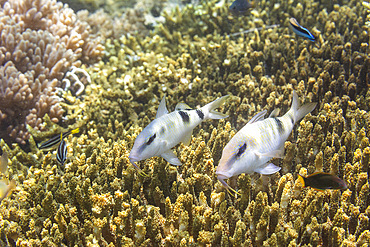
A pair of adult manybar goatfish (Parupeneus multifasciatus), off Bangka Island, near Manado, Sulawesi, Indonesia, Southeast Asia, Asia
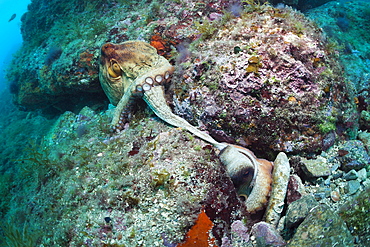
Mating of common octopus (Octopus vulgaris), Cap de Creus, Costa Brava, Spain, Mediterranean, Europe
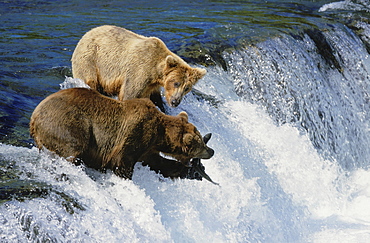
Brown bear. Ursus arctos. At waterfall / brooks falls. Catching leaping sockeye salmon in summer. Katmai n.p, alaska, usa
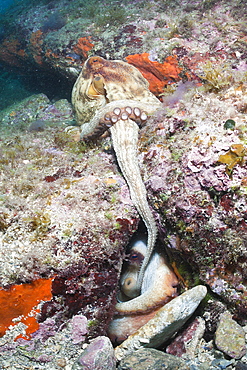
Mating of common octopus (Octopus vulgaris), Cap de Creus, Costa Brava, Spain, Mediterranean, Europe
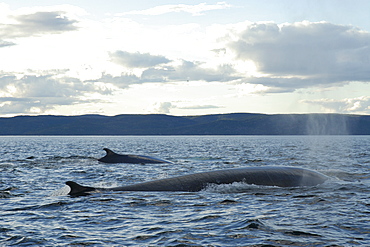
Finback whale (Balaenoptera physalus) might be seen alone or in pairs but often form groups of more than a dozen animals in order to hunt fish. St. Lawrence estuary, Canada (RR)
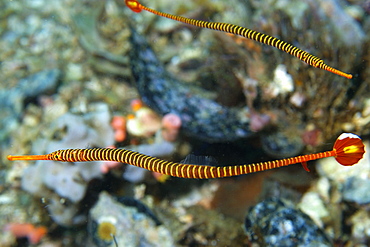
Pair of orange banded pipefish (Doryrhamphus pessuliferus), Gato Island, Cebu, Philippines, Southeast Asia, Asia

Pair of masked rabbitfish (Siganus puellus), swimming in mid-water, Ailuk atoll, Marshall Islands, Pacific
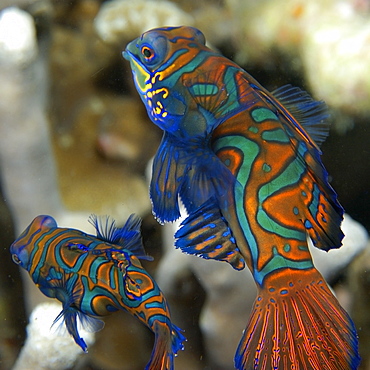
Pair of mandarinfish (Synchiropus splendidus) displaying spawning behaviour, Malapascua, Cebu, Philippines, Visayan Sea, Southeast Asia, Asia
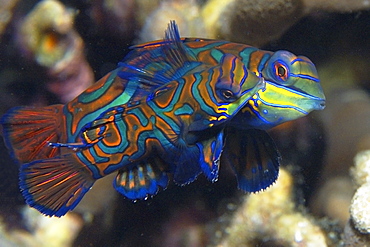
Pair of mandarinfish (Synchiropus splendidus) mating, Malapascua, Cebu, Philippines, Visayan Sea, Southeast Asia, Asia

Pair of mandarinfish (Synchiropus splendidus) displaying spawning behaviour, Malapascua, Cebu, Philippines, Visayan Sea, Southeast Asia, Asia
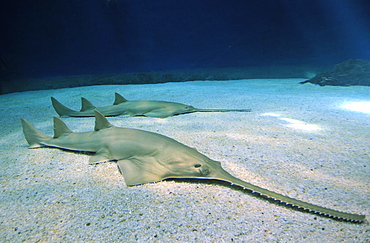
Critically endangered largetooth sawfish (Pristis microdon), Aquarium of Genova, Genova, Liguria, Italy, Europe
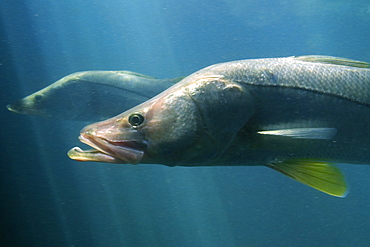
Common snook (Snoek) (Centropomus undecimalis), Homosassa Springs Wildlife State Park, Florida, United States of America, North America
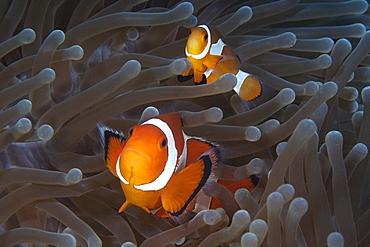
Pair of false clown anemone fish (Amphiprion ocellaris), Dauin, Dumaguete, Negros Island, Philippines, Southeast Asia, Asia

Pair of spotted rabbitfish (golden rabbitfish) (Siganus guttatus) swimming in mid-water, Dumaguete, Negros, Philippines, Southeast Asia, Asia
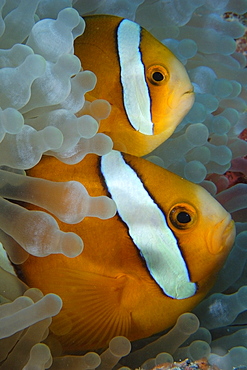
Pair of endemic three-banded anemonefish (Amphiprion tricinctus) and bulb anemone (Entacmaea quadricolor), Namu atoll, Marshall Islands, Pacific
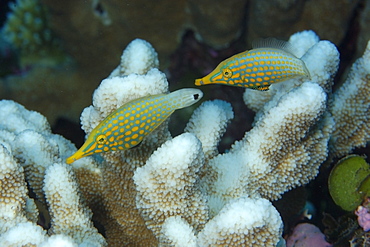
Pair of longnose filefish (Oxymonacanthus longirostris) feeding on coral (Acropora isopora sp.), Rongelap, Marshall Islands, Micronesia, Pacific

Pair of wire coral gobies (Bryaninops yongei) on wire coral (Cirripathes anguina), Ailuk atoll, Marshall Islands, Pacific
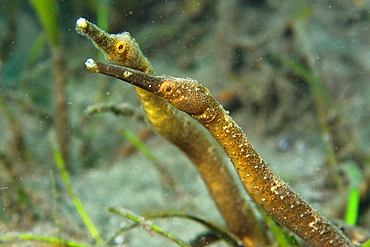
Short-tailed pipefish (Trachyrhamphus bicoarctatus), Masaplod, Dumaguete, Negros Island, Philippines, Southeast Asia, Asia

Clearfin lizardfish (Synodus dermatogenys), Dumaguete, Negros Island, Philippines, Southeast Asia, Asia
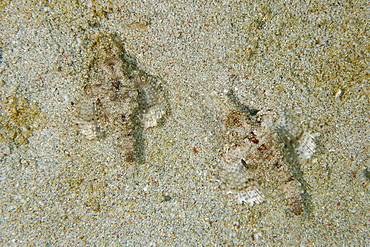
Pair of pegasus fish (dragon sea moth) (Eurypegasus draconis) on sandy bottom, Puerto Galera, Mindoro, Philippines, Southeast Asia, Asia

Pair of orange-dashed gobies (Valenciennea puellaris), Lapus Lapus Island marine park, Malapascua, Cebu, Philippines, Southeast Asia, Asia
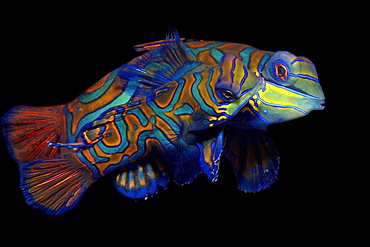
Pair of mandarinfish (Synchiropus splendidus) mating, Malapascua, Cebu, Philippines, Visayan Sea, Southeast Asia, Asia
